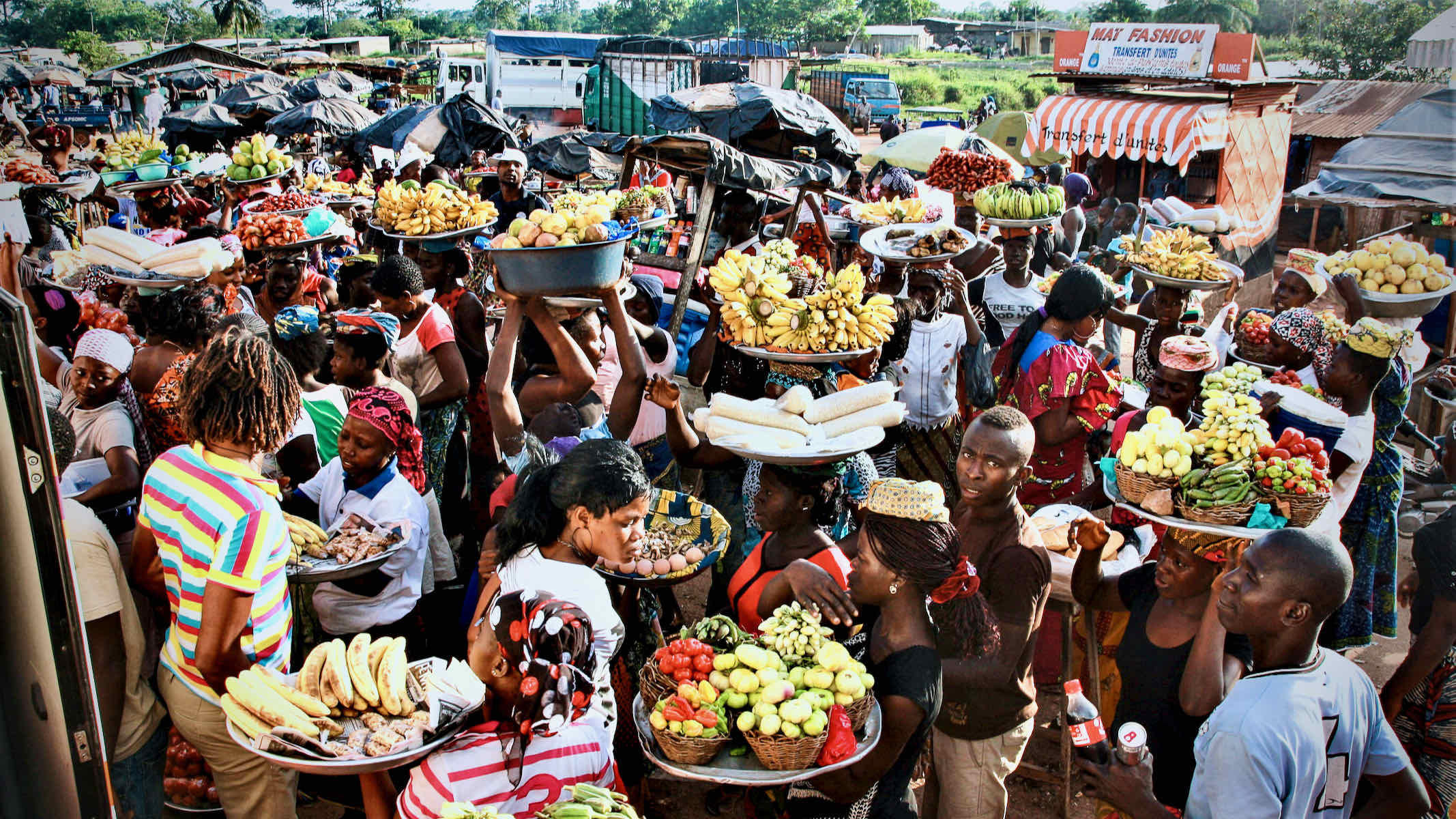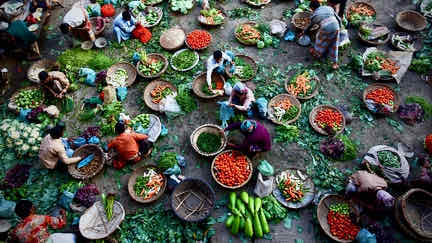The Impacts of COVID-19 on Food and Nutrition Security
The Impacts of COVID-19 on Food and Nutrition Security
The Sector Project Agricultural Policy and Food Security analyses developments and trends
The Sector Project Agricultural Policy and Food Security analyses developments and trends

Integrated implementation of the Agenda 2030 in urban areas,Abidjan_Market
© GIZ / Toni Kaatz Dubberke
After over nine months into the pandemic, we can observe an evolution from a health crisis to an economic crisis and subsequently to a poverty and hunger crisis.
While the agricultural sector has proven rather resilient, economic downturn and related income losses are becoming more and more visible in terms of increased food and nutrition insecurity.
Current policy responses are still mainly focusing on curbing the short-term impacts of the pandemic. In the medium to long term, however, they need to be linked to discussions around how to transform food systems to be more resilient.

Bangladesh ⎟ GIZ / Martin Godau
The primary agricultural sector, after initial problems due to lock-down measures in the meantime, has proven to be quite resilient to the shocks and managed to adapt, where necessary. International commodity prices have remained stable. Cash crops suffered initially but recovered lately. International trade has not been severely interrupted.
In some countries, national markets experienced severe food price inflation. Sophisticated value chains of fresh products, such as fruits, vegetables, milk and meat suffered most, through lock-down measures imposed to contain the spread of COVID-19. By now most markets normalized and the availability of food does not seem to be an issue. However, one should not forget the other challenges, such as floods, droughts, pests or locust plagues. Farmer support programs need to continue or be reinforced so that future production is secured.
The more severe effects on food and nutrition security due to COVID-19 originate mainly from depressed access of consumers to food, and even more so, affordable healthy diets. There is a growing number of data and evidence on this. Job and income losses are leading to lower purchasing power of consumers. Restriction of movement in many places has been particularly devastating for informal sector workers. Coping mechanisms include a reduction of meals and the consumption of lower value foodstuff.
Hunger has already been on the rise since 2014, pushing SDG2 further away from being achieved. If this trend continues, 841 million people could suffer hunger in 2030. Today, the WFP estimates that an additional people 83 to 132 million could be added in 2020 alone, due to the consequences of the COVID-19 pandemic. In Latin America, for instance, the number of people relying on food assistance has tripled in 2020.
Experts further expect declining dietary quality resulting not only from income losses but also, among other aspects, related to limited availability of food transfers through school feeding programs and healthcare resources being diverted from functions relevant for nutrition towards tackling COVID-19. Another major concern is that, in times of crisis, healthy diets become less affordable with further negative health effects. This is closely connected to prevailing poverty. Currently, in no country in the world can people living under the poverty line afford a healthy diet. All these aspects also have important implications from a gender perspective, as women are already more likely to suffer food insecurity and malnutrition. The impact of COVID-19 will have to be monitored closely in terms of coping strategies at the household level, gender-based violence, access to resources and decision making as well as engagement in productive activities and care work by women and men.
A widely adopted policy measure for vulnerable groups is social protection measures. Compared to previous crises, many more countries adopted transfer measures, often as cash transfer, but also as in-kind distribution of foodstuff or food for work programs. Togo, for example, has launched a safety net scheme for informal workers affected by COVID-19. But social protection mechanisms are also very relevant for small-scale food producers, in order to reduce the depletion of productive assets and protect investments. The challenges are on one hand the financing of these programs and on the other hand well targeted and administered programs. The success of the programs is often linked to additional training for participants, for example, to improve agricultural practices or labor skills. In order to generate a higher impact on nutrition, comprehensive behavior change activities need to complement transfers. Next to other short -term relief measures, however, social protection alone cannot replace the long and sound economic recovery of the economy.
For the months to come it will be critical to have a close look at the specific situation in each country. The crisis is evolving quite differently, and policy measures need to be adapted. There are numerous institutions offering advice and opportunities to learn from experience through webinars and publications.
From the mid to long-term perspective, the pandemic confirmed that the entire food system needs to become more resilient to external shocks. This does not require fundamentally new instruments, but the coherent and stringent application of existing policies. From the perspective of agricultural policy, this starts with more productive and secure primary production and continues with a stronger procession, trading and storage sector. Overall, food systems should become more diversified, including through national and regional trade. This also entails providing a policy environment that fosters sustainable production and healthy diets. National food policies should therefore be designed from a multisectoral perspective, adopt nutritional outcomes as a measurable objective and avoid focusing merely on production. In turn, the impacts of the pandemic on food and nutrition security show that when it comes to designing policy responses to COVID-19, agricultural and food policy should not be left out of the picture.
Since March 2020, the Sector Project Agricultural Policy and Food Security analyses these developments and trends for BMZ on a regular basis. Systematic reviews of publicly available reports and market overviews as well as webinars, journalistic sources and feedback from GIZ projects feed into a bi-weekly Bulletin on COVID-19 and Food and Nutrition Security, which can be found on this TOPIC page.
Contact
Authors: Grimmelmann Klaas (klaas.grimmelmann@giz.de and Conrad Graf Hoyos (conrad.hoyos@giz.de)

